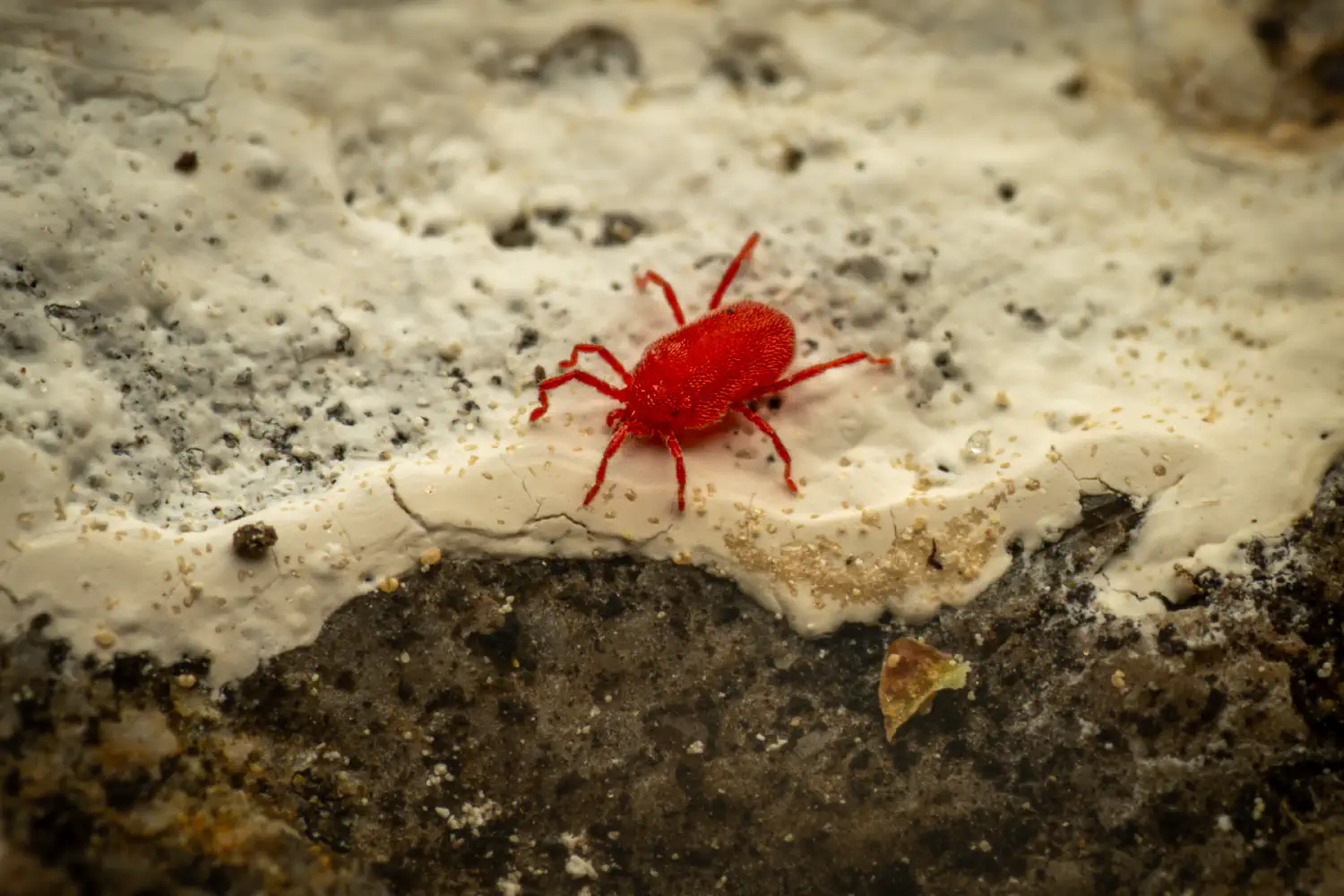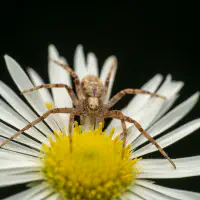The last refuge
Living in chilly areas and in the shade is not really for me. I am a small red mite (my scientific and unfortunately somewhat awkward name is Trombidium holosericeum) and like almost all mites, I love it warm and dry. But now I must say: enough is enough! The last few years in particular have been a real challenge for me and my family. We mites have an instinctive understanding of the seasons and that’s how we know something is wrong. Is it possible that cooling down might actually be a survival strategy for the hottest days?
My name is Mario, and as a mite I have always preferred the sunny corners of my habitat. However, recent summers have brought with them a heat that has become unbearable even for our species. It’s not just the rising temperatures, but also the drought and the lack of night-time cooling that threaten our survival. Our way of life, as much as it has been shaped by evolution, is not prepared for such extremes. We are creatures that normally frolic in the sun on the ground or on walls, in forest edges and on dry grasslands — all of which are now becoming deadly traps.
One evening, at a gathering under numerous large leaves, the conversation turned to the legend of the “last oasis”, told by Ari, the wise old spider. She spoke of a mysterious place in the nearby forest, a refuge full of shade and moisture. The gathering of garden insects listened intently, especially those suffering from the high temperatures. Lisa and Linus, both dragonflies, told how they increasingly stretch their abdomens upwards during hot summer afternoons, an uncomfortable pose that protects them from the dangers of overheating. The whole thing is called the “obelisk pose”, a simple, natural response to the merciless sun. Flora, the peacock butterfly, flew next to them. Flora reported how she has to constantly adjust her wings so that the sun’s rays are reflected and the heat cannot build up under her delicate wings. Lina, the wasp, who buzzed restlessly back and forth at the edge of the assembly, told how she and her family have to cool themselves down more and more often at watering holes. They then transport water to the shared nest, moisten the honeycomb and vibrate their wings. The fanning causes moist air to flow out of the nest and dry air to flow in. The wasps’ air conditioning system uses the effect that water particles are more easily absorbed by dry air - which accelerates evaporation and provides more cooling.
One evening, at a gathering under many large leaves, the conversation turned to the legend of the “last refuge”, as told by Ari, the wise old spider. She spoke of a mysterious place in the nearby forest, a sanctuary full of shade and moisture. The gathering of garden insects listened intently, especially those suffering from the high temperatures. Lisa and Linus, both dragonflies, told how they increasingly stretch their abdomens upwards during hot summer afternoons, an uncomfortable pose that protects them from the dangers of overheating. The whole thing is called the “obelisk pose”, a simple, natural response to the merciless sun. Flora, the peacock butterfly, flew next to them. Flora reported how she has to constantly adjust her position so that the sun’s rays are reflected and the heat cannot build up under her delicate wings. Lina, the wasp, who buzzed restlessly back and forth at the edge of the meeting, told how she and her family have to cool down increasingly often at watering holes. They then transport water to the shared nest, moisten the combs and vibrate their wings. The fanning causes moist air to flow out of the nest and dry air to flow in. The wasps’ air conditioning system uses the effect that water particles are more easily absorbed by dry air — which accelerates evaporation and provides more cooling.
Ari listened to the various survival strategies and added thoughtfully: “These ideas are creative, but only short-term solutions to an increasingly harsh reality. The refuge could offer us long-term relief, a natural sanctuary that makes conditions more bearable for all of us.” Her words painted a picture of a future in which we could not only survive, but thrive. Everyone gathered suddenly had a smile on their face, driven by the hope that such a place really exists.
The next morning, when the first rays of sunshine woke me up, curiosity drove me out into the world. So I set off on the long and dangerous journey to find the refuge, although a look into my past shows that pretty much everything is “dangerous” for our species. The life of a mite begins as a struggle for survival. Our larvae live parasitically on insects, and later, as nymphs and adults, we hunt for food on the ground. As strange as this may sound to some, it is our reality into which we are born. We know this life. But what we don’t know is the exhausting battle against the elements, especially the increasing heat.
The forest was denser and cooler than the open spaces we live on, and the search for the mysterious place proved difficult. Whole days and nights passed as I struggled through the undergrowth. Finally, at the edge of a small clearing, I found what I had been looking for: a narrow hollow, overshadowed by dense trees, with a damp ground that even slightly gave way under my small, light feet.
This place was made for a shelter in summer, even for insects that actually love the heat. Here, in this oasis, the air was cool and the humidity high enough to protect us from dehydration. I spent a few days there, explored the surroundings and found that there was enough food and the conditions were ideal for my family to survive. Overjoyed, I returned to tell the other insects about my discovery. We prepared everything for the move, determined to spend the hottest days of the year in our new home. This refuge will be our sanctuary, our safe haven in a world that leaves us little else to live in. It is a new beginning, a chance to defy the challenges of a changing world.

Little beings in print
Order our calendars and books today!
Compiled with love. Printed sustainably. Experience our little beings even more vividly in print. All our publications are available for a small donation.



